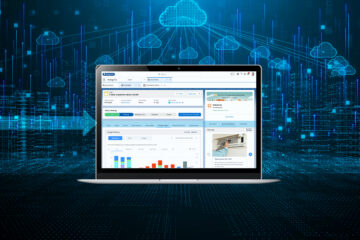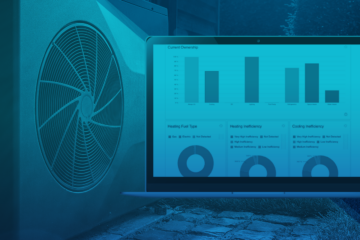
According to the Smart Electric Power Alliance’s Utility Carbon Reduction Tracker, which tracks all publicly announced utility commitments to emission reduction, 69 utilities across the United States have publicly stated carbon or emission reduction goals and 39 utilities have set goals of carbon-free or net-zero emissions by 2050.
These targets have stemmed from mandates in many states to achieve 100 percent renewable energy or cut carbon to zero by 2050, as well as the fact that renewable energy economics continue to improve and public pressure is increasing to counter the impacts of global warming.
Now, as the United States rejoins the Paris Climate Accord this week and President Biden drives toward a carbon- and pollution-free power sector by 2035, utilities in the United States find themselves under renewed pressure to reach their decarbonization goals on a more aggressive timeline.
The good news is, it is achievable. Future-ready utilities who leverage data-driven solutions are in a position to meet this challenge and lead the way toward a zero carbon standard with six essential strategies:
1) Deploy Renewables at A Faster Pace
GOAL: Achieve city, province and state clean energy targets on or ahead of schedule.
WHAT UTILITIES CAN DO: Continue to increase investments in renewable power generation and accelerate the deployment of PV and energy storage.
HOW BIDGELY CAN HELP: UtilityAI’s propensity modeling and hyper-personalized communications tools allow utilities to detect, target and connect with customers who have the greatest interest in generating, storing and using their own renewable energy — driving up to 100% uptake. Bidgely’s Analytics Workbench tool makes customer target identification and messaging both highly accurate and efficient. For example, customers who have not yet installed solar panels in specific locations where PV is more prevalent and who demonstrate high overall consumption and high consumption during daylight hours are ideal candidates.
2) Electrify Transport and Heat
GOAL: Shift to electric vehicles and heat pumps to reduce emissions.
WHAT UTILITIES CAN DO: Promote the purchase of EVs and heat pumps, lead the way in deploying EV charging infrastructure, and design rate structures to encourage electrification.
HOW BIDGELY CAN HELP: Using AI-powered appliance analytics and load pattern recognition, Bidgely can identify who already has an EV or electric heating appliances. This allows for highly effective targeting and personalized engagement. Analytics Workbench also identifies those customers with a higher propensity to buy EVs — such as solar customers and customers living in neighborhoods with high EV penetration — opening up opportunities for utilities to play a role in the purchasing process.
UtilityAI also enables utilities to develop data-driven operational strategies to support the increased load from EVs and electric heating. UtilityAI’s identification tools reveal where ownership clusters are forming, enabling utilities to mitigate grid impacts before they become an issue.
3) Improve Energy Efficiency
GOAL: Maximize negawatts.
WHAT UTILITIES CAN DO: Empower customers with relevant and timely energy insights and concrete behavioral recommendations they can use to take action. The energy savings accrued from improvements in energy efficiency are the simplest and least expensive path to reducing greenhouse gas emissions.
HOW BIDGELY CAN HELP: UtilityAI provides utilities with a range of AI-powered disaggregation and behavioral science tools to build consumer excitement about making smarter energy decisions and make it simple to take action. Utilities are able to engage customers in a regular cadence of useful, relevant, personalized communications that provide meaningful guidance as to how they can become greener and save money. Providing customers with practical, simple and personally relevant steps they can take to lower their carbon footprint and energy costs leads to an average of up to 3% energy savings.
4) Promote Demand Side Management
GOAL: Reduce peak demand and optimize the time of energy usage with TOU rates and behavioral programs.
WHAT UTILITIES CAN DO: Shift more demand to off-peak usage. Peaking power-plants are often the most carbon intensive, so reducing peak demand has a significant impact on overall emissions.
HOW BIDGELY CAN HELP: UtilityAI makes it possible for utilities to predict load patterns and pinpoint what time customers are powering appliances or activities to individually tailor behavioral demand response on a customer-by-customer basis. Knowing when a customer runs a pool pump, for example, and for how long, reveals a highly targeted list of customers who run their pumps during peak times and are therefore ideally suited for load shifting programs. This AI-driven personalization increases consumer peak demand savings by up to 30%.
5) Encourage Smart Homes
GOAL: Leverage universal deployment of smart and interconnected devices to improve power system flexibility and empower users to change behavior patterns.
WHAT UTILITIES CAN DO: Identify homes that are not using smart or efficient devices and make efforts to upgrade their energy equipment.
HOW BIDGELY CAN HELP: UtilityAI’s patented disaggregation technology identifies homes that are not currently using smart devices and enables utilities to offer hyper-personalized smart marketplaces that promote a relevant selection of clean energy products and services to each individual customer. Rather than a stand-alone ecommerce channel, Bidgely’s Smart Shop platform leverages our highly engaging and successful digital energy alert programs to position products and services as an integrated part of the utility’s overall customer outreach and engagement strategy.
6) Adopt Digital-First Strategies
GOAL: End deforestation and paper waste.
WHAT UTILITIES CAN DO: Transition away from paper-intensive print-and-mail communications in favor of email and web-based tools.
HOW BIDGELY CAN HELP: With AI-based insights, utilities can customize and personalize digital communications so customers read, share, respond and act. On average, Bidgely-powered web portals see greater traffic and email programs realize open rates of more than 50%. Plus, digitalization provides equitable access to all consumption tiers, allowing utilities to engage middle and low consumption and income customers as part of all of the strategies outlined above for greater gains toward decarbonization without added program costs.
For more information including case studies demonstrating how Bidgely is helping utilities achieve their decarbonization goals, visit bidgely.com/decarbonization.
Download the infographic (click to access)



